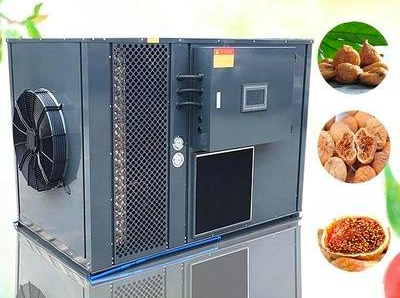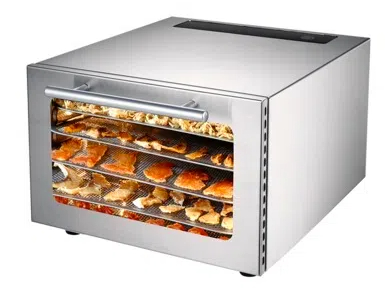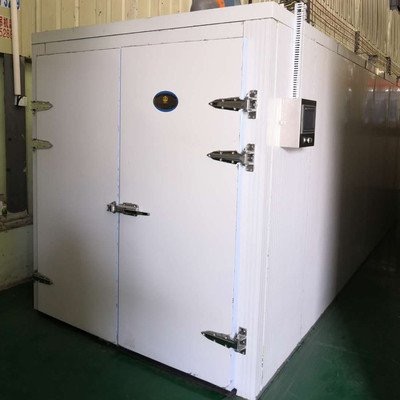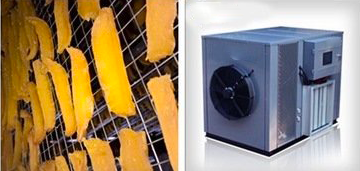
Content Menu
● Introduction
● What is a Food Dehydrator?
>> Types of Food Dehydrators
>> How Food Dehydration Works
● Heat Pump vs Vented Dryer: Key Differences
>> Energy Efficiency
>> Drying Process
>> Cost Implications
>> Environmental Impact
● Advantages of Heat Pump Dryers
● Disadvantages of Heat Pump Dryers
● Advantages of Vented Dryers
● Disadvantages of Vented Dryers
● Choosing the Right Food Dehydrator for Your Needs
● Practical Applications of Food Dehydrators
>> Snack Production
>> Meal Preparation
>> Pet Treats
>> Camping and Hiking Supplies
>> Culinary Innovations
● Conclusion
● Frequently Asked Questions
>> 1. What is the main difference between heat pump and vented dryers?
>> 2. Are heat pump dryers worth the investment?
>> 3. Can I use a heat pump dryer for all types of foods?
>> 4. Do vented dryers dry food faster than heat pump dryers?
>> 5. Which type of dryer is more environmentally friendly?
Introduction
Food dehydrators are essential appliances for preserving food, enhancing flavors, and extending shelf life. As a manufacturer specializing in food dehydrators, we provide OEM services to international brands, wholesalers, and producers. In this article, we will explore the differences between heat pump and vented dryers, focusing on their applications in food drying. We will also discuss the advantages and disadvantages of each type, helping you make an informed decision for your food processing needs.

What is a Food Dehydrator?
A food dehydrator is an appliance designed to remove moisture from food items, thereby inhibiting the growth of bacteria, yeast, and mold. By reducing moisture content, dehydrators help preserve the nutritional value and flavor of fruits, vegetables, meats, and herbs.
Types of Food Dehydrators
There are various types of food dehydrators available in the market:
- Conventional Dehydrators: These use electric heating elements to dry food.
- Heat Pump Dehydrators: These utilize heat pump technology to efficiently remove moisture.
- Vented Dryers: These are traditional dryers that expel hot air to dry food.
How Food Dehydration Works
Food dehydration works by removing moisture from food items through a combination of heat and airflow. The process typically involves:
1. Preparation: Foods are washed, cut into uniform pieces, and sometimes blanched to preserve color and nutrients.
2. Drying: The dehydrator applies heat to the food while circulating air around it. This airflow helps evaporate moisture quickly.
3. Cooling: Once dried, the food should be allowed to cool before packaging to prevent condensation.
4. Storage: Properly dried foods can be stored in airtight containers in a cool, dark place for extended shelf life.
Heat Pump vs Vented Dryer: Key Differences
Energy Efficiency
One of the most significant differences between heat pump and vented dryers is energy efficiency.
- Heat Pump Dryers: These are known for their energy-saving capabilities. They recycle heat within the unit, requiring less energy to operate compared to conventional methods.
- Vented Dryers: These typically consume more energy as they continuously draw in air from the environment and expel heated air outside.
Drying Process
The drying process also varies significantly between these two types of appliances.
- Heat Pump Dryers: They operate at lower temperatures and use a closed-loop system to extract moisture. This gentle drying process helps retain more nutrients and flavors in the food.
- Vented Dryers: These use high temperatures to evaporate moisture quickly. However, this can lead to nutrient loss and affect the quality of the dried product.
Cost Implications
When considering cost implications:
- Initial Investment: Heat pump dryers tend to have a higher upfront cost due to their advanced technology.
- Operating Costs: Despite the initial investment, heat pump dryers often result in lower operating costs over time due to their energy efficiency.
Environmental Impact
In today's eco-conscious world, environmental impact is a crucial factor.
- Heat Pump Dryers: These are generally more environmentally friendly due to their lower energy consumption and reduced carbon footprint.
- Vented Dryers: Their higher energy usage can lead to increased greenhouse gas emissions.

Advantages of Heat Pump Dryers
1. Energy Efficiency: As mentioned earlier, heat pump dryers use less energy than vented dryers.
2. Nutrient Retention: The lower drying temperatures help preserve nutrients better than high-temperature methods.
3. Versatility: Heat pump dryers can be used for a variety of foods, including delicate items like herbs and fruits.
4. Reduced Operating Costs: Although they have a higher upfront cost, the long-term savings on energy bills make them cost-effective.
5. Less Noise: Heat pump technology typically operates quieter than traditional vented systems.
6. Consistent Results: Heat pump dryers provide consistent drying results across different batches due to their controlled environment.
7. Moisture Control: They can effectively manage humidity levels within the drying chamber, preventing over-drying or under-drying of foods.
8. User-Friendly Features: Many modern heat pump dryers come equipped with digital controls and preset programs for various types of foods, making them easy to use for beginners.
Disadvantages of Heat Pump Dryers
1. Higher Initial Cost: The advanced technology comes at a premium price point.
2. Longer Drying Times: While they are efficient, heat pump dryers may take longer to dry food compared to vented options.
3. Complexity: The technology can be more complex, potentially leading to higher repair costs if issues arise.
4. Size Considerations: Heat pump dryers may require more space due to their design and components compared to simpler vented models.
5. Maintenance Requirements: They may need regular maintenance checks for optimal performance due to their intricate systems.
Advantages of Vented Dryers
1. Lower Initial Cost: Vented dryers are generally less expensive upfront compared to heat pump models.
2. Faster Drying Times: They can dry food more quickly due to higher operating temperatures.
3. Simplicity: The technology is straightforward and easier to maintain or repair.
4. Widely Available Parts: Replacement parts for vented dryers are often more readily available due to their popularity and longer presence in the market.
5. Robustness: Vented dryers tend to have fewer electronic components than heat pump models, which may lead to greater durability under heavy use conditions.
Disadvantages of Vented Dryers
1. Higher Energy Consumption: Vented dryers consume more energy, leading to higher utility bills.
2. Nutrient Loss: The high temperatures used can degrade the quality of dried foods.
3. Environmental Impact: Increased energy usage contributes negatively to environmental sustainability efforts.
4. Limited Control Over Drying Conditions: Users have less control over temperature and humidity settings compared to heat pump models.
5. Potential for Over-Drying: Without precise temperature control, there's a risk of over-drying foods which can lead to loss of flavor and texture.
Choosing the Right Food Dehydrator for Your Needs
When selecting between a heat pump dryer and a vented dryer for food dehydration, consider the following factors:
- Type of Food Being Dried: If you plan on drying delicate items like herbs or fruits, a heat pump dryer may be preferable due to its gentler drying process.
- Budget Considerations: Evaluate your budget for both initial investment and ongoing operating costs.
- Energy Efficiency Goals: If reducing your carbon footprint is important, opt for a heat pump dryer.
- Space Availability: Consider how much space you have available in your kitchen or production area; some models require more room than others.
- Frequency of Use: If you plan on using your dehydrator frequently or for large batches, investing in a high-quality heat pump dryer could be beneficial despite its higher cost upfront.
Practical Applications of Food Dehydrators
Food dehydrators have numerous applications beyond simple preservation:
Snack Production
Dehydrators are excellent for creating healthy snacks such as fruit leathers or vegetable chips without added preservatives or sugars.
Meal Preparation
Dehydrated foods can be rehydrated later for soups or stews, making meal prep easier while allowing you to store seasonal produce year-round.
Pet Treats
Many pet owners use dehydrators to create homemade treats from meats or vegetables that are healthier than store-bought options filled with additives.
Camping and Hiking Supplies
Dehydrated meals are lightweight and easy to pack for outdoor adventures; they require minimal preparation when water is available for rehydration.
Culinary Innovations
Chefs often use dehydrated ingredients as garnishes or flavor enhancers in gourmet dishes; this trend is growing in popularity within fine dining establishments.
Conclusion
In conclusion, both heat pump and vented dryers have their unique advantages and disadvantages when it comes to food dehydration. Heat pump dryers stand out for their energy efficiency and nutrient retention but come with a higher initial cost. On the other hand, vented dryers offer faster drying times at a lower upfront price but may compromise on quality and sustainability.
Ultimately, your choice should align with your specific needs regarding budget, type of food being dried, space availability, frequency of use, and environmental considerations. As a manufacturer dedicated to providing high-quality food dehydrators through OEM services, we encourage you to explore both options thoroughly before making your decision.

Frequently Asked Questions
1. What is the main difference between heat pump and vented dryers?
Heat pump dryers recycle heat within a closed system for efficient drying at lower temperatures, while vented dryers expel hot air outside at higher temperatures.
2. Are heat pump dryers worth the investment?
Yes, despite their higher initial cost, heat pump dryers offer long-term savings on energy bills due to their efficiency and help preserve food quality better than vented dryers.
3. Can I use a heat pump dryer for all types of foods?
Yes, heat pump dryers are versatile and suitable for various foods including fruits, vegetables, meats, and herbs.
4. Do vented dryers dry food faster than heat pump dryers?
Generally yes; vented dryers operate at higher temperatures which can lead to quicker drying times compared to heat pump models.
5. Which type of dryer is more environmentally friendly?
Heat pump dryers are typically more environmentally friendly due to their lower energy consumption compared to vented dryers.












